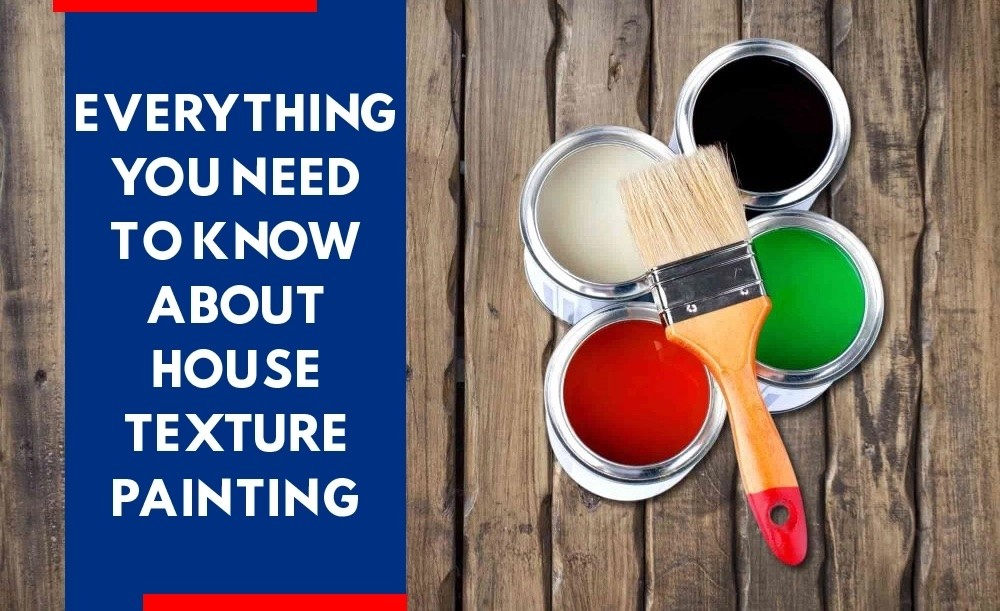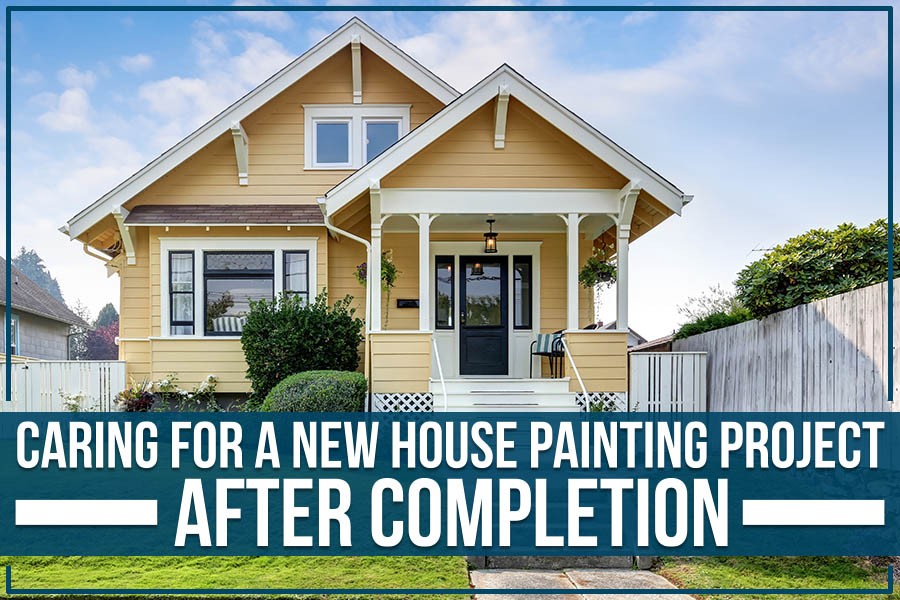4 Types Of Exterior Sheens For A Perfect Finish!
Everything You Need To Know About House Texture Painting

Table of Contents
The walls of your home can be one of the most important aspects of a room's design. Not only do they provide structural support, but they also often serve as the backdrop for all other elements in the space. But if you're looking for something more than just plain white walls, texture painting could be the answer! In this article, we'll cover everything you need to know about house texture painting: from choosing paint and materials to applying techniques that will give any room a unique look and feel.
Textured paint is a great way to upgrade the look of any interior wall. It can lend a range of visual effects from subtle ripples and swirls to bold geometric designs which add dimension and depth to any surface. DIY enthusiasts can take up this challenge with ease, but for those who want results that are up to professional standards, it is best to call in a professional painting contractor. With their expertise and experience, you're sure to get excellent results that will transform your home into something truly special.
Finally, knowing how to properly prepare surfaces before beginning a texture painting project is key to achieving great results. We'll discuss what steps should be taken when prepping walls so that the finished product looks professional and lasts for years to come. So don't wait any longer - read on for everything you need to know about house texture painting!
Texture painting is a type of paint job that involves using textured paints to create a unique and visually appealing finish. The process requires more than just picking out the right color - it also involves layering different types of textures onto the walls or ceiling, which can give any room an extra bit of character. Not only does texture painting offer homeowners something aesthetically pleasing but it is also very durable and easy to clean. This makes it ideal for homes with children or pets as it won’t easily show signs of wear and tear over time.
Moreover, texture painting has many benefits from hiding imperfections on walls to creating soundproofing effects in certain areas. With so much going for it, it's no wonder why this particular type of paint job has become increasingly popular among homeowners looking to spruce up their home decor.
Now that we have explored what texture painting entails, let's take a look at the various types of textures available when completing a project like this one.
Creating an interesting paint texture can be easily achieved with a variety of texture painting techniques. For example, popcorn ceilings give rooms an antiquated feel while orange peel textures provide a subtle, but unique effect. If you're looking for something more striking, try using joint compound to create ridges and valleys on walls before adding a thin layer of paint - the results are quite impressive! With the right oil paints and thoughtful technique, you'll find it's easy to create interesting textures that will add depth to your room.
No matter which type of texture you choose, each one provides its unique benefits when applied properly. Texture painting can do much more than just make your walls look great; let's take a closer look at some of these advantages now.
Textured painting offers a range of advantages that can help you achieve the desired look for your home. One of these advantages is durability. A textured surface is much more resistant to damage than a flat finish and it will be able to withstand any wear and tear better over time. Another advantage is the possibility to customize your walls with different types of paint brushes, giving them unique looks depending on what type of texture you choose.
In addition, texture painting can also provide insulation benefits for your home; adding an extra layer of protection from outside temperatures and keeping heat or cool air inside longer. This helps reduce energy costs as well as make your home more comfortable year-round. Finally, texture painting also creates visual interest in a room, allowing homeowners to express their creativity by playing around with different textures and colors.
By taking into consideration all the benefits that come along with texture painting, homeowners are sure to find something perfect for their needs and style preferences. Preparation is key before beginning a texture painting project, so let's take a closer look at how best to prepare now.
Before you even pick up a brush to start painting, there is one key step that should never be overlooked: preparation. Taking the time to properly prepare your walls and surfaces before texture painting can save you from costly mistakes or repairs down the line. Here are some tips on how best to get ready for this type of project:
• Cleaning: Begin by thoroughly cleaning all areas where the texture will be applied with a damp cloth or sponge. This helps remove any dust, dirt, grease, or other debris which could interfere with adhesion and create an uneven surface after painting.
• Spackling Compounds: Next, use spackling compounds to fill in any holes or cracks in the wall that need repairing. These compounds help ensure a smooth finish when it's time to paint over them later on.
• Sandpaper & Palette Knife: Once the spackle has dried completely (which usually takes between 24-48 hours), lightly sand down the area using fine grit sandpaper and then apply a thin layer of drywall mud with a palette knife if needed. This creates an ideal base surface for applying textured paints later on.
• Primer Coat: When working with water-based paint products such as acrylics and latexes, always remember to apply at least one coat of primer first. Not only does this improve color retention but it also allows for better adhesion of textures afterward.
These preparatory steps provide the perfect foundation for beginning your texture painting journey! With everything ready to go, selecting the right materials is the next logical step towards achieving professional results every time.
Now that you have prepared the walls and surfaces for painting, it's time to select the right materials. There are several different textured paints available on the market today; each with its unique characteristics and applications. To ensure success, here are a few things to consider when picking out your supplies:
• Paint Roller: When applying any type of texture paint using a quality paint roller will help achieve an even coverage while avoiding streaks or brush marks. Depending on what kind of finish you're looking for, rollers come in various sizes and textures – from standard ribbed ones to more specialized options like foam rollers.
• Flat Paint: Layering texture on walls or surfaces is a great way to create unique, eye-catching looks. Start with a base coat of white acrylic paint to ensure that the colors you use over it will remain true for longer. Then, explore different texturing materials like oil paints, texture paste, and more - each one can provide a unique effect when used in combination. Get creative and experiment to find the perfect look for your space!
Once all these materials are gathered together, it's time to move on to the actual application process! With careful attention paid to detail, proper techniques can make all the difference between amateurish results and beautiful finishes every time.
All good things come to those who wait, and painting is certainly no exception. Before you can get down to business, it's best to take a few extra precautions to ensure your safety while working with textured paints and other materials. Here are some tips for application success:
• Chalk Paint: When using chalk paint, be sure to give the surface light sand after applying a base coat. This will help create an even finish and provide better adhesion of the texture paint when applied later on.
• Drywall Texture Types: Depending on what kind of drywall texture look you're going for, there are several different types available such as orange peel or knockdown textures. For most projects, it's best practice to apply at least two coats of each type since thicker layers tend to produce more uniform results over time.
• Fiberglass Entry Doors: If you plan on adding texture to fiberglass entry doors, always use high-quality rollers designed specifically for this purpose – otherwise the texture may not adhere properly in certain areas resulting in uneven coverage overall. Additionally, make sure the door is clean before beginning so that any dirt particles don't interfere with the result.
No matter which material you choose for your project, it's important to give yourself plenty of time and patience when completing every step along the way! With careful preparation and mindful attention paid throughout the process, achieving beautiful finishes – like popcorn ceilings or faux marble walls – can become second nature with just a little bit of practice.
It is essential to take safety precautions when painting textures in the home. Not only should you ensure your well-being, but also protect yourself and others from potential hazards like asbestos insulation. The presence of this hazardous material can be especially dangerous if disturbed during a paint job – so it's important to always wear protective gear while working with textured paints and other materials.
For those who may already have asbestos insulation installed in their homes, it is recommended that they contact a qualified professional for proper removal before beginning any texture painting project. This will help minimize exposure to airborne particles or fragments created by improper handling procedures. Additionally, many manufacturers offer warranties of up to one year for products containing asbestos insulation – so make sure to check with your supplier before purchasing any supplies for added peace of mind.
Choosing safer alternatives such as water-based finishes or natural fiber rollers are excellent ways to reduce the chances of health risks associated with certain types of textured paints and fibers. Taking measures such as these can help keep everyone safe without sacrificing quality results!
Author

Mason Marquis, raised in Newport Beach, California, and Austin, Texas, amalgamated his experiences from both vibrant cities in his journey. His academic pursuit in Economics and Psychology at the University of North Texas (UNT) led to the founding of Spray Tex Painting. This venture was not just a business for Mason but a practical application of his academic learnings, particularly the integration of economic concepts and psychological understanding. Spray Tex Painting, under Mason's direction, transcends being merely a painting service; it's a platform where client visions are realized through dedication and creativity.
Related Articles

4 Types Of Exterior Sheens For A Perfect Finish!

5 Ways To Tell A Painting Contractor Is Trying To Scam You!

Busting 5 House Painting Myths - All The More Reasons For Color In Your Life!

Caring For A New House Painting Project After Completion